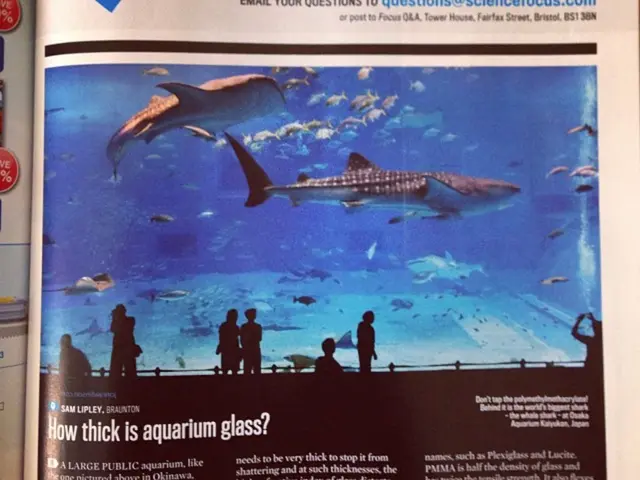Night Vision Enhancement through Infrared-Sensitive Contact Lenses, Empowering Individuals with Nocturnal Vision Capabilities
Innovative Contact Lenses Grant Humans and Mice Infrared Vision
Researchers from the University of Science and Technology of China have developed a groundbreaking technology: contact lenses that enable users to see near-infrared light. These lenses, described in the journal Cell on May 22, can convert infrared light into visible wavelengths without the need for an external power source.
These remarkable lenses, composed of specialized nanoparticles embedded in standard soft contact material, permit wearers to perceive flickering infrared signals without sacrificing their ability to see visible light. The unique nanoparticles absorb infrared light and convert it into wavelengths visible to mammalian eyes, thus expanding human vision beyond the visible spectrum.
tests conducted on both animals and humans revealed clear signs of infrared perception, even in conditions where the eyes were closed. These cutting-edge contact lenses hold immense potential for various applications, such as security, communication, and even supporting individuals with color blindness.
Tian Xue, the senior author and a neuroscientist at the University of Science and Technology of China, declared that the research opened up the possibility for the creation of non-invasive wearable devices capable of granting people extraordinary vision. The team, led by Xue, combined nanoparticles with safe, non-toxic polymers commonly used in soft contact lenses to develop their invention.
After confirming the contact lenses' non-toxicity, the researchers studied their function in both humans and mice. They observed that mice wearing the contact lenses avoided infrared-illuminated areas, indicating their ability to perceive infrared wavelengths. Furthermore, the physiological responses of contact-wearing mice, such as constricting pupils and activated brain imaging in visual processing centers, reinforced these findings.
In human trials, participants wearing the contact lenses were able to accurately detect flashing Morse code-like signals and discern the direction of incoming infrared light. According to Xue, "It's totally clear cut: without the contact lenses, the subject cannot see anything, but when they put them on, they can clearly see the flickering of the infrared light."
An additional feature allows users to differentiate between various spectra of infrared light by engineering nanoparticles to color-code distinct wavelengths. For example, infrared wavelengths of 980 nm were converted to blue light, 808 nm to green light, and 1,532 nm to red light. This color-coding capability not only enables users to perceive more detail within the infrared spectrum but also could aid individuals with color blindness by making previously invisible wavelengths detectable.
In addition to the near-infrared upconversion contact lenses, the team developed a wearable glass system using the same technology to enhance human vision with higher-resolution infrared information. Currently, the contact lenses only detect infrared radiation emitted from an LED light source; however, the researchers are striving to increase the nanoparticles' sensitivity to lower levels of infrared light.
"In the future, by collaborating with materials scientists and optical experts, we hope to create a contact lens with more precise spatial resolution and higher sensitivity," said Xue.
The research was supported by multiple funding organizations, including the Science and Technology Innovation 2030 Major Program, the National Key Research and Development Program of China, and the Human Frontier Science Program, among others.
This research represents a significant step forward in wearable technology and offers immense potential for diversifying and enhancing human vision beyond natural limits. The unique near-infrared upconversion contact lenses could revolutionize fields such as security, communication, and assistive technology for individuals with color deficiencies.
- The groundbreaking near-infrared upconversion contact lenses developed by researchers from the University of Science and Technology of China have the ability to expand human vision beyond the visible spectrum, as demonstrated by neuroscience research in the journal Cell.
- Neurotechnology, such as these contact lenses, holds immense potential for applications in various fields, including health-and-wellness sectors like security, communication, and assistive technology for people with color deficiencies.
- The research, supported by multiple funding organizations including the Science and Technology Innovation 2030 Major Program, the National Key Research and Development Program of China, and the Human Frontier Science Program, offers a major breakthrough in the realm of neuroscience news and wearable technology.
- By utilizing nanoparticles and safe, non-toxic polymers, the development of near-infrared upconversion contact lenses represents an exciting leap in neurotech, opening up the possibility for non-invasive wearable devices to grant people extraordinary vision, according to senior author and neuroscientist Tian Xue.








